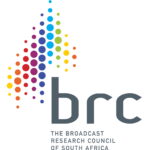
After a few years of relying on individual media currencies provided by separate media owners because of the lack of an independent products and brands survey, single-source data is once again flexing its muscle and reflecting the totality and complexity of the South African society. Having already shown the strength of its data in quarterly releases, in October 2021, the Marketing Research Foundation (MRF) will be presenting the first full-year data of Marketing All Product Survey (MAPSTM).
In the past South Africa was at the forefront of data collection and SAARF’s AMPS survey was the general go-to for all media planners and strategists. However, the unfortunate demise of this single-source data led to a void in the media planning process, and many agencies were forced to use old data to try and track an increasingly changing, segmented and fragmented market. The current scenario where there are individual JICs reporting on their own media currencies have further complicated this process.
 “The MRF was born as an independent, non-profit company, acting as the custodian and repository of research expertise for the marketing industry and their advertising industry partners,” says MRF’s CEO, Johann Koster. “The MAPS survey has been introduced to fill the void that marketers have been clamouring for.”
“The MRF was born as an independent, non-profit company, acting as the custodian and repository of research expertise for the marketing industry and their advertising industry partners,” says MRF’s CEO, Johann Koster. “The MAPS survey has been introduced to fill the void that marketers have been clamouring for.”
The Foundation’s main objectives are to establish, commission and manage comprehensive, valid, reliable, and continuous consumer behaviour research, surveys, investigations and reports, that provide data for targeting and segmentation, as well as multi-product/brand usage and multi-media information that reflects the totality and complexity of the South African society.
“MAPS offers the familiarity and comfort of AMPS but is modernised, updated and greatly enhanced,” comments Koster. “MAPS is designed to be independent of any commercial interest and to be the heart of an organisations consumer data and insights strategy. MAPS should form the focal point for developing marketing strategies including market sizing and segmentation, consumer profiles, brand profiles, media profiles, etc. Once these elements have been compiled, the media currencies should be used for detailed media planning and purchasing.”
With the advent of the COVID pandemic, it was believed that MAPS would probably be a pipe dream. But after receiving the results of the first 5000 interviews, followed by March and June, the MRF were back on track and the general response from the market has been very positive. Next month will see the validation of years of work that has been put into MAPS when the full-year dataset is released to subscribers.
And MAPS is certainly gaining the support of the marketing industry! The research is transparent and free of influence from commercial interests – allowing marketers to make informed choices based on data generated by the input of their own questions. The completely modernised survey, including innovations such as multi-platform behaviour, decision-making questions and geo-codable data, enable synergies between media planning and marketing strategy resulting in cost-effective advertising.
This large-scale sample and single source data will enable the MRF, in collaboration with MASA and other industry partners, to develop a much needed Segmentation Model, which will replace the old LSM segmentation. This model will be shaped in partnership with industry stakeholders and fellow JICs. The industry urgently requires one segmentation model that everyone believes in and that can be used for years to come by the entire marketing and advertising industry.
Like the proverbial phoenix, single-source data is on the rise and for the first time in five years, the marketing and media industry has demographic, intermedia, behavioural, product and brand data in one survey.
For additional information on MAPS – http://mrfsa.org.za/maps/
Social Media: Facebook – https://www.facebook.com/MRFSouthAfrica/
LinkedIn – https://www.linkedin.com/company/mrfsa
- UJ & Razor PR partner to reshape communication skills - 23rd April 2024
- Applications open for fourth intake of the ACA Women in Leadership Programme - 23rd April 2024
- Top 50 DSTV programmes – March 2024 - 22nd April 2024




